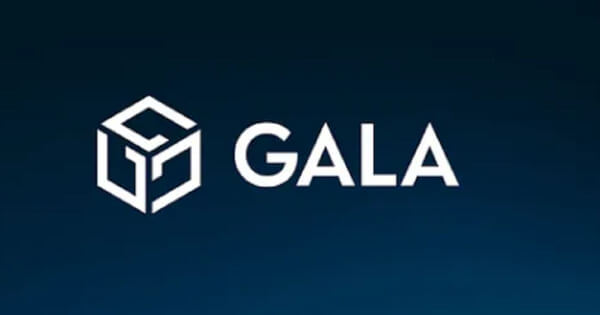
By implementing timestamping and blockchain technology, media and publications can increase their readers’ assurance.
Readers expect their news content to be reliable and trustworthy, yet many doubt it actually is. Readers cite issues like unchecked sources, rushing too fast to print, careless reporting and news sites being deliberately misleading as contributing to their eroding trust in published content. Yet readers seek out — and are even willing to pay for — credible, factual, objective news. Increased trust will come from providing more transparency into the reporting and writing process, and the solution to this for news sites will come from an unusual source: blockchain technology.
State of trust in publishing today
We recently conducted a report called “Trust in Digital Publishing” that sought to uncover how readers currently feel about the news sites they follow, the stories they see and how credible they think the sites are. We found that 61% of those surveyed want better fact-checking and more focus on accuracy from the news sites they follow. They believe that news sites publish inaccurate information due to inexperienced journalists or bad practices, and 35% think that news organizations don’t have the best interests of their readers in mind. Meanwhile, 42% have stopped reading a news site they used to read, and 51% have abandoned news sites simply over one article they felt was inaccurate.
But readers are indeed seeking good, factual news: 46% of people polled said they're willing to pay for accurate journalism. They say that better fact-checking, a focus on accuracy over speed, more transparency over the editorial process, and admitting when the news organization made a mistake can help increase trust. When it comes to transparency in the editorial process, some news sites have begun "showing their work" — like when Washington Post journalist David Fahrenthold posted pictures of his research notes to followers on Twitter. This process allows readers to see how stories were researched and put together.
But I think organizations can go one step further and use blockchain timestamping to increase trust with their readers.
Related: Trust is still a must in the trustless world of cryptocurrency
How blockchain can increase trust
Blockchain technology didn't start with cryptocurrency. It was created much earlier in a 1991 whitepaper entitled "How to Time-Stamp a Digital Document" by researchers Stuart Haber and W. Scott Stornetta. They anticipated the questions that would arise in a digital world around document authorship and authenticity. “They wondered how we might know for certain what was true about the past,” wrote Amy Whitaker in The Wall Street Journal. “What would prevent tampering with the historical record — and would it be possible to protect such information for future generations?” Haber and Stornetta’s solution: timestamp the data.
Instead of taking documents and data and sending them to a timestamping service for safe-keeping — where they could still be tampered with — Haber and Stornetta suggested timestamping data with a unique identifier, or a hash, that would be attached to the data. The unique hash would then be sent to a service to be stored — like an “old school copyright” — tied to a specific version of the document or data and kept on a decentralized, public ledger. That is how the blockchain works, started by recognizing the need to protect the accuracy of content.
Related: Circling back to blockchain’s originally intended purpose: Timestamping
The same use cases Haber and Stornetta proposed can be applied today: timestamping inventions or ideas to show who created them first or timestamping company documents to prove if they've been tampered with. But the biggest use case today is in the place where the majority of us get most of our information: the internet.
Timestamping can be a way to prove authorship, expose unauthorized alterations of content, and provide more transparency and trust to the article someone's reading. After creating a piece of content, a news source would timestamp it with a unique hash, which would then be added to a public blockchain for everyone to see. That unique hash — composed of inputs from the title, the date, and the writing itself — would correspond to that specific piece of content. Once the hash is added to the blockchain, it can't be altered. If the piece’s contents are updated or changed, a new hash needs to be created with a different timestamp. Essentially, an individual fingerprint gets created for each piece of content a news organization makes, proving the integrity in an open-source way.
It also stops intermediaries from “stamping their approval” on content, leaving out a biased and fallible third party who could corrupt or change the data (a solution some news organizations are proposing today and exactly what Haber and Stornetta wanted to avoid). An article in Wired also points out that we pay third-party intermediaries a lot of money for a lot of different services, many of which blockchain technology can replace. They point out: “A decade or so from now it will be like the internet: We’ll wonder how society ever functioned without it. The internet transformed how we share information and connect; the blockchain will transform how we exchange value and whom we trust.”
Timestamping can increase reader trust in that they'll know they’re reading an unaltered article or news story. Once there's widespread adoption of timestamping, readers will come to better trust news organizations that use it and distrust those that don't.
Related: Is crypto approaching its 'Netscape moment'?
Timestamping for tomorrow
Today, reader loyalty isn't guaranteed. More and more readers are switching news sites seeking ones that provide factual, objective and accurate information. They're also looking for more transparency in the writing, research and editorial processes. Timestamping is one way to help readers understand when the content was created and assures them that they're reading an original version of the story rather than one that's been altered. Increased confidence increases loyalty, which will increase readers and paying subscribers, too.
The views, thoughts and opinions expressed here are the author’s alone and do not necessarily reflect or represent the views and opinions of Cointelegraph.

You can get bonuses upto $100 FREE BONUS when you:
💰 Install these recommended apps:
💲 SocialGood - 100% Crypto Back on Everyday Shopping
💲 xPortal - The DeFi For The Next Billion
💲 CryptoTab Browser - Lightweight, fast, and ready to mine!
💰 Register on these recommended exchanges:
🟡 Binance🟡 Bitfinex🟡 Bitmart🟡 Bittrex🟡 Bitget
🟡 CoinEx🟡 Crypto.com🟡 Gate.io🟡 Huobi🟡 Kucoin.

















Comments